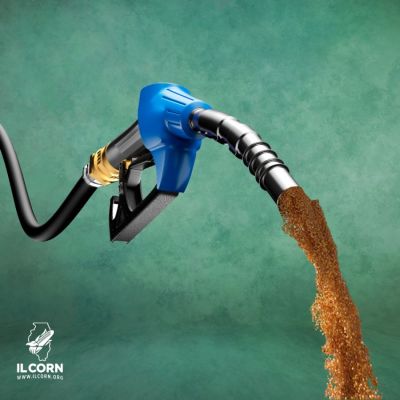
6 Ways to Strengthen Illinois’ Clean Energy Future
In the past few years, the U.S. has experienced impacts on our supply chain, energy costs and fuel prices from global energy insecurity. Combined with an urgent focus on combatting climate change and its consequences, policymakers and industry leaders alike are searching for solutions on the path to a more sustainable future. To achieve our shared energy and climate goals, expanding the use of renewable fuels in transportation is critical — and solutions like today’s corn ethanol can play an immediate and more significant role in our nation’s clean energy future.

The previous Congress began work to address these challenges, and now it is time to call on policymakers to push forward and work with Illinois corn farmers to reach our shared energy and environmental goals.
Here’s what the new Congress can do to ensure Illinoisans have greater access to the benefits of today’s ethanol:
1. Recognize Rural Illinois as a Key Partner for Tackling Climate and Energy Issues
Ethanol is a low-cost, low-emission fuel most commonly made from sustainably-grown corn. By collaborating with Illinois’ corn growers, Congress can make meaningful environmental progress, advance renewable resources and ensure longer-term energy security.
2. Advance Low-Carbon Ethanol to Accelerate Decarbonization and Cut Costs
According to the U.S. Department of Energy’s Argonne National Lab, corn ethanol results in up to 52 percent fewer greenhouse gas emissions than gasoline and can achieve net-zero carbon emissions. Less expensive than unblended gasoline, corn ethanol is a low-cost fuel source.
3. Set a Clean, High-Octane Fuel Standard to Boost Efficiency, Cut Emissions
The Next Generation Fuels Act is a low-cost solution to clean up the fuel supply and transition the U.S. to more efficient vehicles and fuel, cutting carbon emissions and improving air quality by taking advantage of higher ethanol blends and advanced engines.
4. Incentivize Cleaner Fuels Based on Carbon Reduction
Implement with an accurate and effective life cycle carbon assessment, including the benefits of climate-smart farming and new tax incentives. Congress enacted in 2022 for sustainable aviation fuel and clean fuels will spur greater carbon reductions and rural growth.
5. Expand Full Market Access to Higher Ethanol Blends
Last summer, drivers who chose E15/Unleaded 88 — a higher ethanol blended fuel — saved an average of 16 cents per gallon. Passage of the Consumer and Fuel Retailer Choice Act would increase the availability and use of E15, eliminating uncertainty at the pump for this low-cost, low-emission fuel and unlocking $20.6 billion in annual savings.
6. Maximize the Benefits of the Renewable Fuel Standard
The Renewable Fuel Standard has been an energy, economic and environmental success, supporting increased use of cleaner fuels that expand our energy supply, reduce costs and grow rural economies. Continued volume growth as the Environmental Protection Agency finalizes new rules this year maximizes these benefits.
Join Illinois farmers in urging lawmakers to leverage the benefits of corn ethanol and help the U.S. fully realize its sustainable, clean energy future.
Learn more about IL Corn’s commitment to sustainability and renewable fuels.


